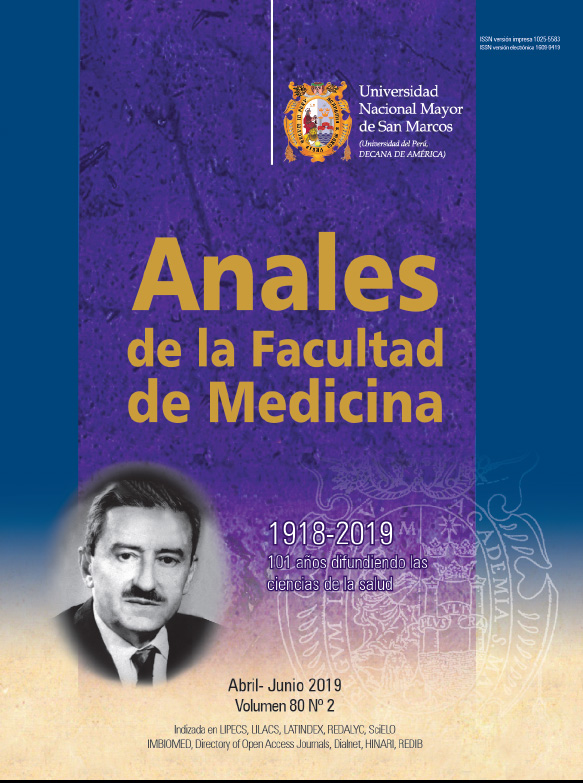Association between adolescent pregnancy and hyperbilirubinemia and low weight at birth: retrospective cohorte in a hospital in Perú, 2015-2016
DOI:
https://doi.org/10.15381/anales.802.16407Abstract
Introduction. Adolescent pregnancy in Peru is a public health problem that has high prevalence in regions such as Ica, and is considered as a cause of certain adverse outcomes to the health of the newborn as low weight and hyperbilirubinemia. Methods. A retrospective cohort was designed consisting of adolescent pregnant women between 13 and 19 years of age, which were divided into two groups: group 1 (<18 years of age) and group 2 (≥18 years of age). Results. A total of 481 adolescent pregnant women were evaluated, of which group 1 represented 65,3%. Newborns with low weight and hyperbilirubinemia were found in 3,3% and 18,9%, respectively. The bivariate analysis showed significant differences (p<0,001) between the median gestational age among mothers with newborns with normal weight and low weight, as well as in relation to the type of delivery (cesarean and normal). Regarding hyperbilirubinemia, both bivariate and multivariate analyzes showed no significant differences. The Cox regression showed that adolescent pregnant women in group 1 had almost 8 times more risk (HR: 7,95, p<0,05) of having a newborn with low weight compared to the pregnant women in group 2. Conclusion. Adolescent pregnancy is associated with low birth weight, but not with neonatal hyperbilirubinemia.
Downloads
Published
Issue
Section
License
Copyright (c) 2019 Anales de la Facultad de Medicina

This work is licensed under a Creative Commons Attribution-NonCommercial-ShareAlike 4.0 International License.
Those authors who have publications with this magazine accept the following terms:
- Authors will retain their copyrights and guarantee the journal the right of first publication of their work, which will be simultaneously subject to Creative Commons Attribution License that allows third parties to share the work as long as its author and its first publication this magazine are indicated.
- Authors may adopt other non-exclusive licensing agreements for the distribution of the version of the published work (eg, deposit it in an institutional electronic file or publish it in a monographic volume) provided that the initial publication in this magazine is indicated.
- Authors are allowed and recommended to disseminate their work over the Internet (eg: in institutional telematic archives or on their website) before and during the submission process, which It can produce interesting exchanges and increase quotes from the published work. (See El efecto del acceso abierto ).















